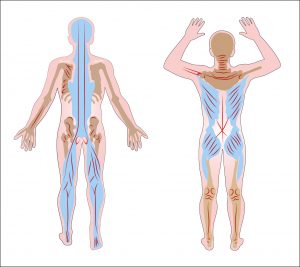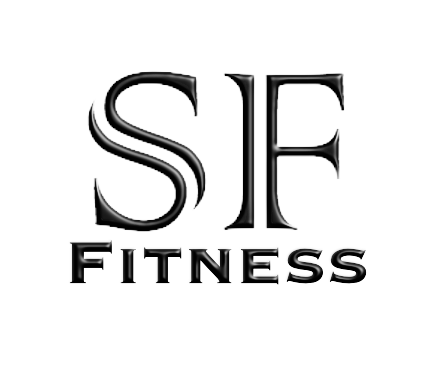If you’ve been around any of bodybuilding or functional strength training, you may have seen a common trend of hip / butt exercises. These would range from barbell hip thrusters, to glute kickbacks, and RDL’s. While they’re good for the gram and make you look good in those leggings, there are benefits to focusing on muscle groups that flow from the calves up to the neck.

What is The Posterior Chain?
Simply put, it’s a series of muscle groups that overlap on the backside of you. I typically refer to them as the “non-mirror muscles” in most cases. These muscle groups included range from:
- Calves
- Hamstrings
- Glutes
- Erectors
- Lats
- Upper back (traps, rhomboids, rear delts, teres major)
- Triceps (loosely)
Why should you care?
The human skeletal system (and the entire body for that matter), is a series of levers of an agonistic (primary mover) and antagonistic (opposing movers) set of balances. For example, when the biceps contracts during a curl, the triceps lengthen / stretches, and vice versa. This is important to know because too much of something can also be a bad thing. Going back to that biceps example, while you may have big biceps, too much stress on those tendons can actually promote pain in your shoulder, elbow, and neck. It can also correlate to headaches and poor posture, too.
Functionality wise, having balance and coordination around a joint and corresponding joints can help improve athletic performance and prevent injuries. The top 2 athletic injuries are sprained ankles and knee injuries (primarily ACL tears). Increasing strength and coordination of the glute, hamstring, and calves can save you a lot of pain / insurance copays.
So how do I program this?
This depends on a couple things. While the anatomy is all the same for everyone, your leverages, goals, previous injuries, and typical day should all be taken into consideration. Consult with a trainer at your gym if you have concerns.
Now if you’re like most and just want to experiment like I am, the general rule of thumb I use is 2:1 ratio. For ALL volume in a pushing movement, do twice as much for the opposite / antagonist movement. Use the loosely put together bench press example below for a more laid out example
Monday / International Chest Day
Empty Bar – 10x (450#)
95# x 5 (475, 925#)
115# x 1 (115, 1040#)
135# x 1 (135, 1175#)
150# x 1 (150, 1325)
180# x 1 (180, 1505)
210# x 3×3 (1890, 3395#)
Again, this is loosely based on someone’s bench press routine, but with the numbers above, I’d recommend doing at least 6790# of a rowing / pull motion from this alone. This doesn’t take into any secondary pressing movements either, so this number would likely need to be increased.
One thing to also take into consideration are triceps. While you’re technically “pushing” with them, don’t be afraid to hammer them, but do it intelligently. Depending on the day / goal for the workout, lighter weight but higher reps is great for tendon thickening and blood flow. Slightly heavier weight and less reps is good for getting more muscle growth / hypertrophy in the triceps itself. Both will help with joint pain, improve posture, and increase functionality / strength.
Warming up helps, too
Before you even touch the main movement, taking a couple minutes to get some work in will help. Super light / banded moves like rows and triceps extensions can help get your nervous system ready for the the workout. It’ll help make the secondary and tertiary movements both feel and be performed better, too.
Final Thoughts
I know it’s a lot of math, but keeping track of it does pay off in the end. It can also help you proactively avoid some issues in the future. Put these numbers in the notes app on your phone, or hell some training programs have an app that you can log the total volume and they’ll calculate it for you.
Give this a try and see if your joint pain decreases, gain some mobility, and improve overall workout output.


Recent Comments